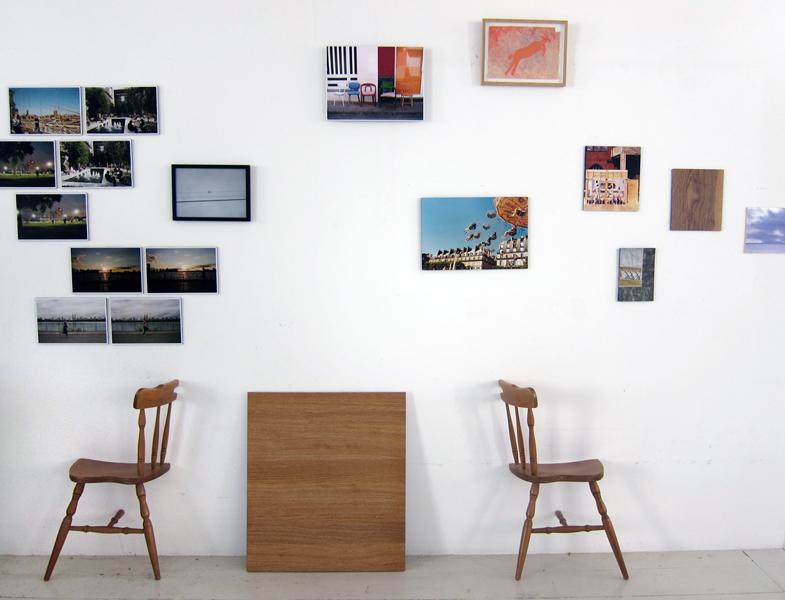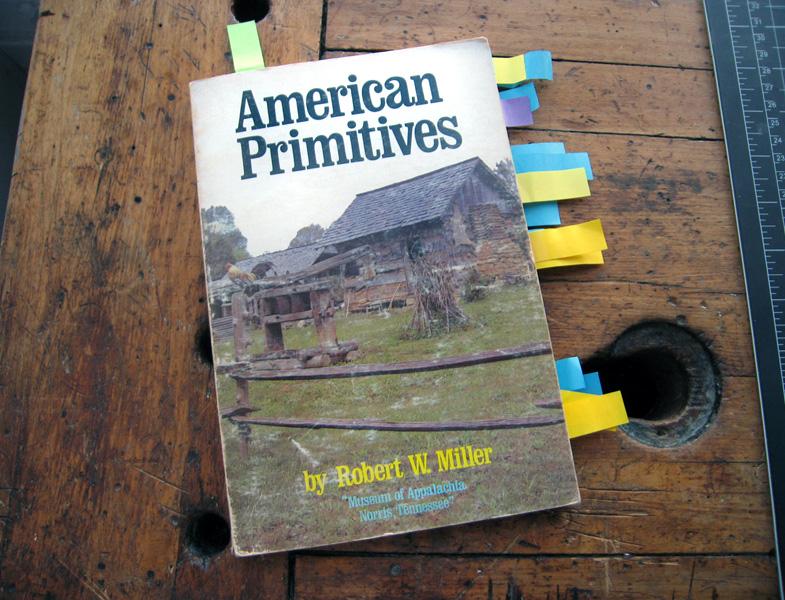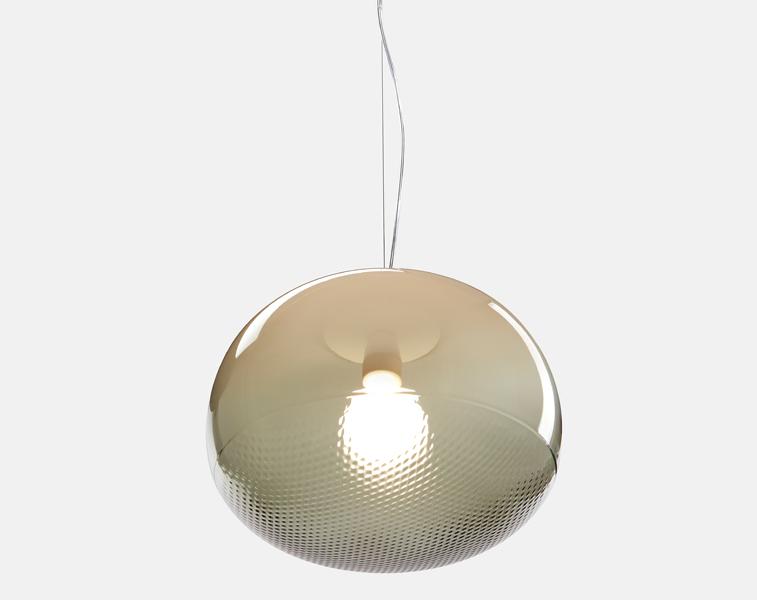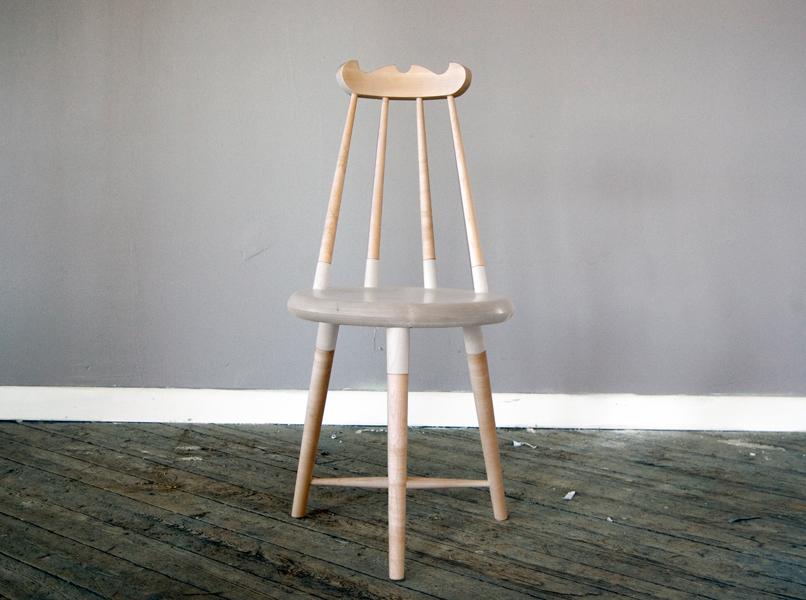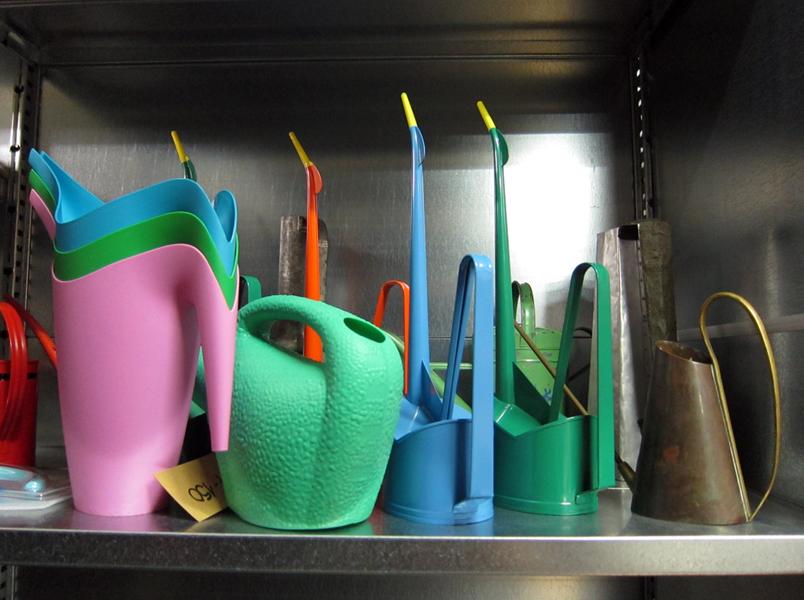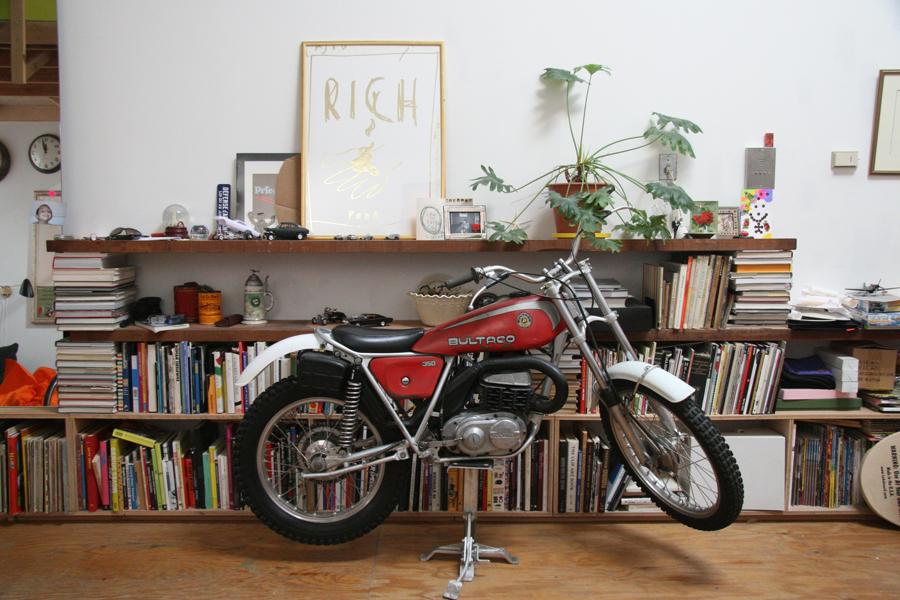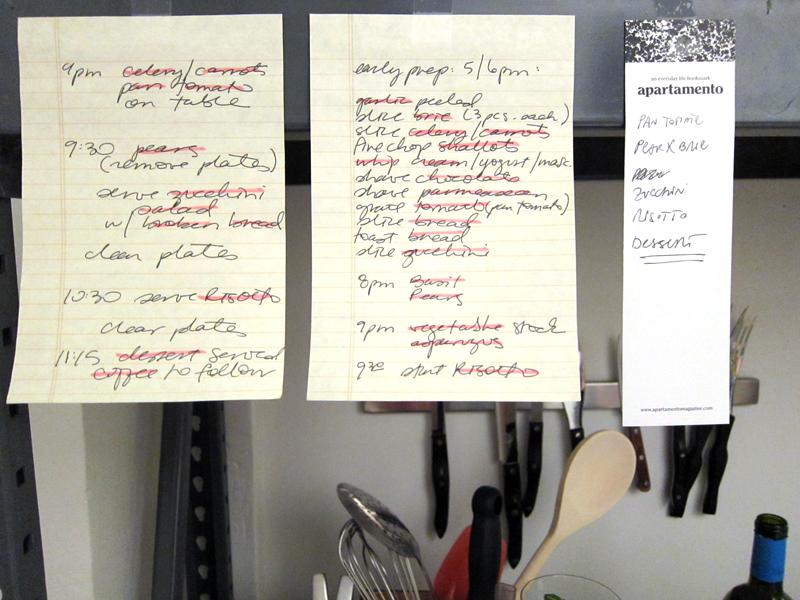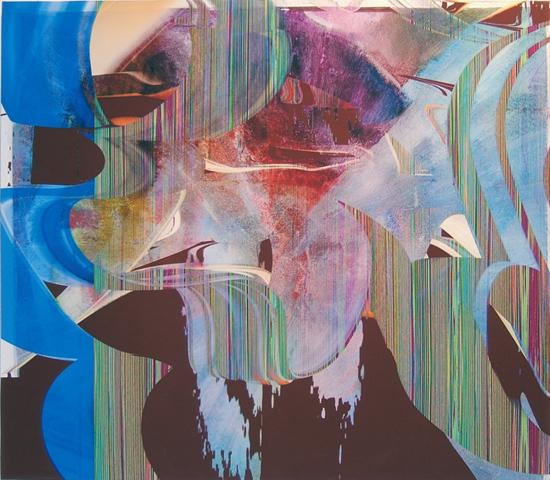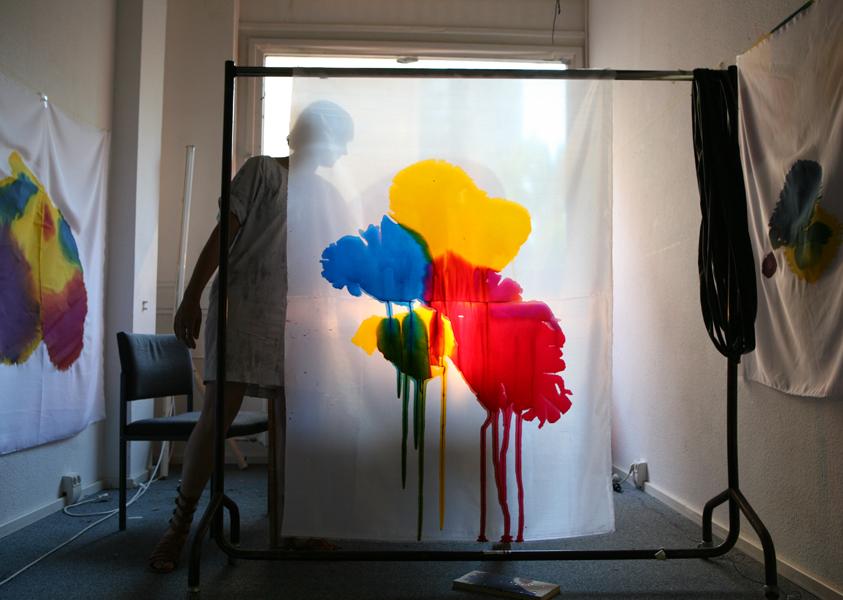
07.21.10
The Making of
Make an Osmose Lamp, With Clemence Seilles
Clemence Seilles was only four months into a job at Jerszy Seymour's Berlin studio when she started to feel it: that restlessness creatives invariably get when they're unable to fully express themselves. It's not that the job wasn't fulfilling — it was, and more — but working fulltime meant Seilles hadn't yet found a way to devote attention to her own projects. "I had this idea to make a piece that would do the work for me, something that would happen when I wasn't there," she recalls. One morning she hung a few felt-tip pens from the ceiling of her apartment, their tips pressed down against a sheet of Chinese rice paper, and left for Seymour's studio. "When I came back that evening, the work was made."
